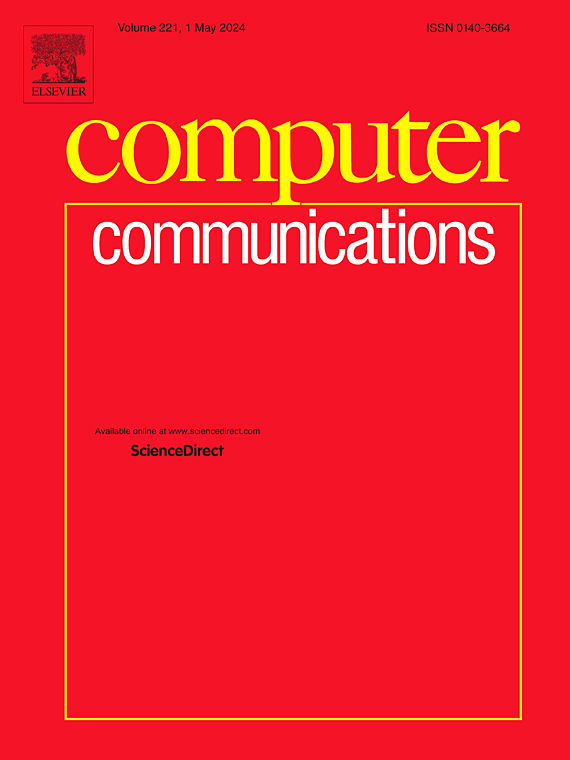A novel energy-efficient cross-layer design for scheduling and routing in 6TiSCH networks
IF 4.5
3区 计算机科学
Q1 COMPUTER SCIENCE, INFORMATION SYSTEMS
引用次数: 0
Abstract
The 6TiSCH protocol stack plays a vital role in enabling reliable and energy-efficient communications for the Industrial Internet of Things (IIoT). However, it faces challenges, including prolonged network formation, inefficient parent switching, high control packet overhead, and suboptimal resource utilization. To tackle these issues, we propose in this paper a novel cross-layer optimization framework aiming to enhance the coordination between the Scheduling Function (SF), the Routing Protocol for Low-Power and Lossy Networks (RPL), and queue management. Our solution introduces a slot-aware parent switching mechanism, early slot reservation to mitigate queue overflow, and a refined slot locking strategy to improve slot availability. To reduce control overhead, the proposed method merges 6P cell reservation information into RPL control packets (DIO/DAO), thus minimizing control exchanges during parent switching and node joining. Optimized slot selection further reduces latency and jitter. Through extensive simulations on the 6TiSCH simulator and under varying network densities and traffic loads, we demonstrate significant improvements over the standard 6TiSCH benchmark in terms of traffic load, joining time, latency, and energy efficiency. These enhancements make the proposed solution suitable for time-sensitive IIoT applications.
6TiSCH网络中一种新的节能跨层调度和路由设计
6TiSCH协议栈在实现工业物联网(IIoT)的可靠和节能通信方面发挥着至关重要的作用。然而,它也面临着一些挑战,包括网络形成时间长、父交换效率低、控制数据包开销高、资源利用率不理想等。为了解决这些问题,本文提出了一种新的跨层优化框架,旨在增强调度函数(SF),低功耗和有损网络路由协议(RPL)和队列管理之间的协调。我们的解决方案引入了一个槽感知的父交换机制、早期的槽保留以缓解队列溢出,以及改进的槽锁定策略以提高槽可用性。为了减少控制开销,该方法将6P单元保留信息合并到RPL控制数据包(DIO/DAO)中,从而最大限度地减少父节点交换和节点加入过程中的控制交换。优化的插槽选择进一步减少了延迟和抖动。通过在6TiSCH模拟器上进行广泛的模拟,并在不同的网络密度和流量负载下进行模拟,我们证明了在流量负载、加入时间、延迟和能源效率方面比标准6TiSCH基准有显著的改进。这些增强功能使所提出的解决方案适用于时间敏感的工业物联网应用。
本文章由计算机程序翻译,如有差异,请以英文原文为准。
求助全文
约1分钟内获得全文
求助全文
来源期刊

Computer Communications
工程技术-电信学
CiteScore
14.10
自引率
5.00%
发文量
397
审稿时长
66 days
期刊介绍:
Computer and Communications networks are key infrastructures of the information society with high socio-economic value as they contribute to the correct operations of many critical services (from healthcare to finance and transportation). Internet is the core of today''s computer-communication infrastructures. This has transformed the Internet, from a robust network for data transfer between computers, to a global, content-rich, communication and information system where contents are increasingly generated by the users, and distributed according to human social relations. Next-generation network technologies, architectures and protocols are therefore required to overcome the limitations of the legacy Internet and add new capabilities and services. The future Internet should be ubiquitous, secure, resilient, and closer to human communication paradigms.
Computer Communications is a peer-reviewed international journal that publishes high-quality scientific articles (both theory and practice) and survey papers covering all aspects of future computer communication networks (on all layers, except the physical layer), with a special attention to the evolution of the Internet architecture, protocols, services, and applications.
 求助内容:
求助内容: 应助结果提醒方式:
应助结果提醒方式:


